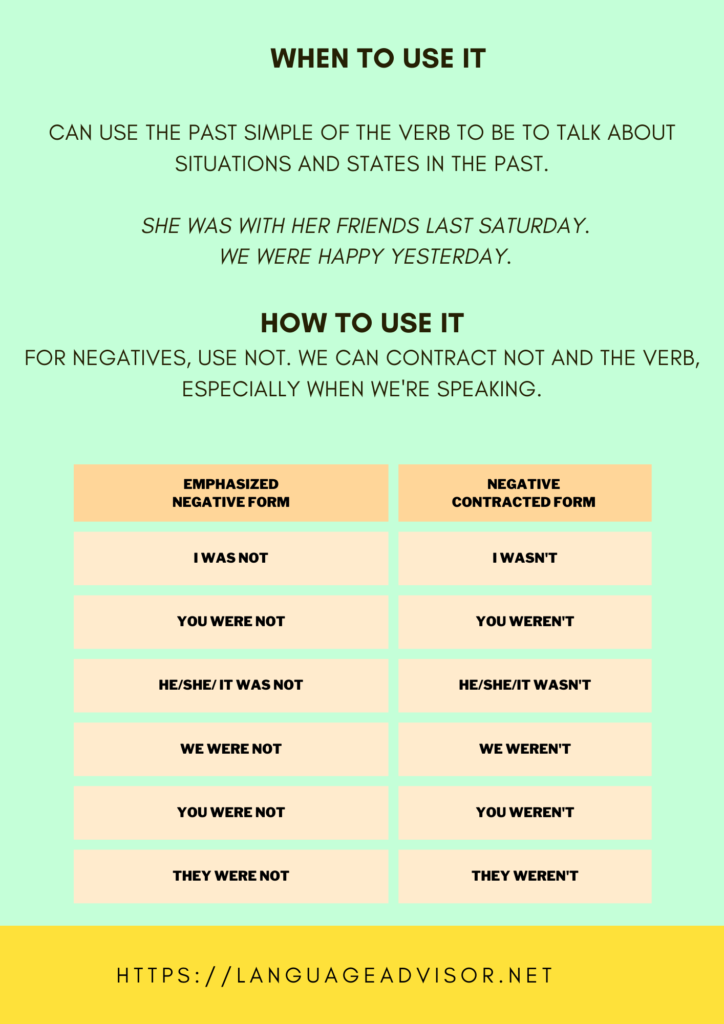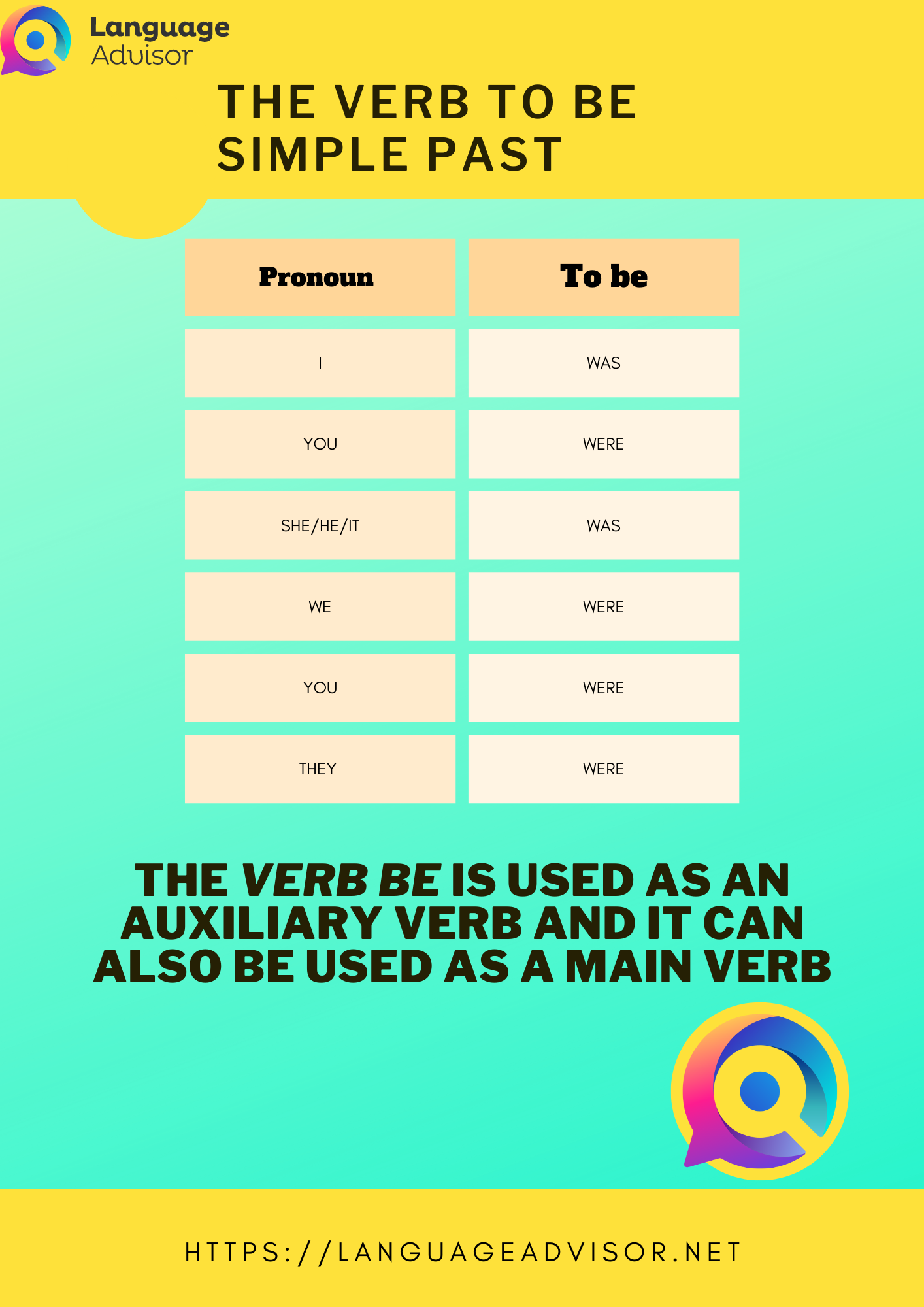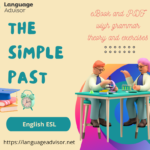Simple Past tense of the verb to be. Worksheets for the verb to be. English grammar with exercises. Free eBook and printable PDF
Simple Past tense of the verb to be
The Verb to Be – Simple past tense



The verb be is used as an auxiliary verb and it can also be used as a main verb.
| Pronoun | To be |
| I | WAS |
| YOU | WERE |
| SHE/HE/IT | WAS |
| WE | WERE |
| YOU | WERE |
| THEY | WERE |
WHEN to use it
can use the past simple of the verb to be to talk about situations and states in the past.
She was with her friends last Saturday.
We were happy yesterday.
HOW to use it
For negatives, use not. We can contract not and the verb, especially when we’re speaking.
| EMPHASIZED NEGATIVE FORM | NEGATIVE CONTRACTED FORM |
| I WAS NOT | I WASN’T |
| YOU WERE NOT | YOU WEREN’T |
| HE/SHE/ IT WAS NOT | HE/SHE/IT WASN’T |
| WE WERE NOT | WE WEREN’T |
| YOU WERE NOT | YOU WEREN’T |
| THEY WERE NOT | THEY WEREN’T |

EXERCISES
THE VERB “(to) BE” – Simple past
EXERCISE 1.
Complete the exercises by inserting the correct form of the verb ‘to be’
e.g. When you were ten years old, were you friendly with other children?
1. When he ________ nine years old,_______ he clever?
2. When they ________ young, _______they friends?
When ________ the last time you ________ in Milan?
When we _______ young, we _______very athletic.
When she ________ twenty, she _________very thin.
EXERCISE 2.
Complete the sentences by inserting the correct pronoun.
e.g. When they were young, they were very friendly.
When ______was ten years old, _______was a good basketball player.
When ________were young, __________were always happy.
When _________ were seventeen, were ________ popular at school?
EXERCISE 3.
Complete the following sentences by answering the questions using either the negative or the positive forms of the verb ‘to be’.
When you were a child , were you good at playing football?
When your mother was young, was she an athletic person?
When your friends were children, were they happy?

All downloads are in PDF format
Worksheets for the verb to be: eBook and PDF
BROWSE THE EBOOK ONLINE OR DOWNLOAD THE PDF FOR FREE







